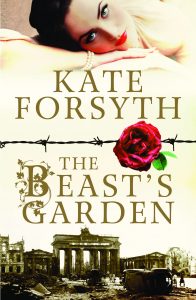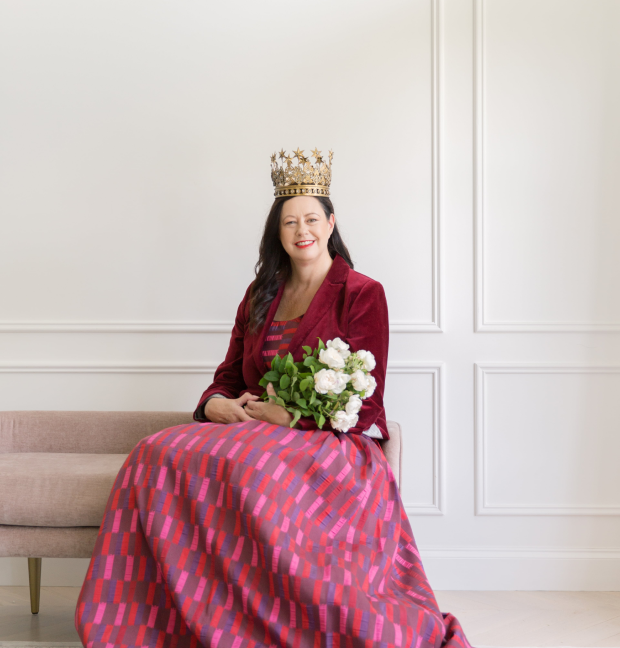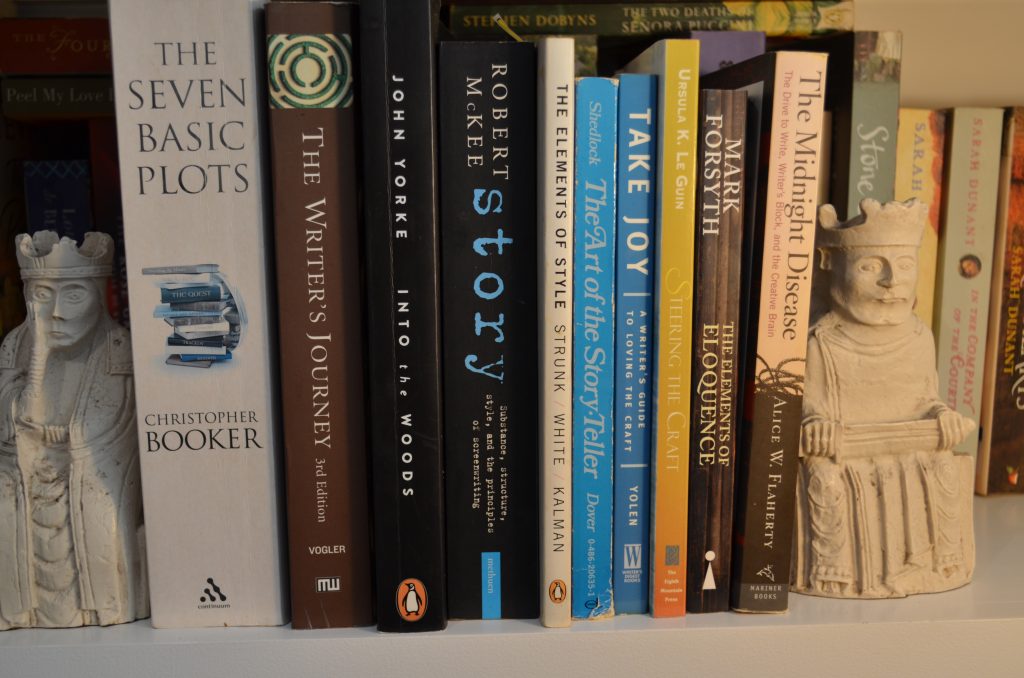
Sometimes a book can change your life.
The Diary of Anne Frank was that kind of book for me.
I read it when I was twelve years old. I can still remember the awful shock of reaching the end, and finding out that Anne did not escape her attic, that she died in Bergen-Belsen when she was only a few years older than I was.
I had never read a book like it before. It felt like I had been punched hard in the solar plexus. I could not breathe, I could not cry. My very heart felt bruised.
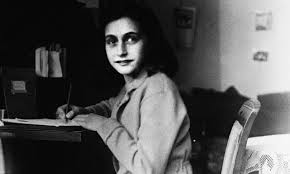
Anne Frank
I began to write my own diary a few days later. Anne Frank had written hers as a series of letters addressed to an imaginary friend named Kitty. I did the same, but addressed mine to “Carrie”. The first entry was written on 15/8/1978 and began ‘Dear Diary, your name is now Carrie. You’ll be my confidant and my port in which to lay my head and my poor worn-out hopes, thoughts and ambitions …’
I have written in my diary nearly every day since. That is thirty-seven years of consecutive diary writing, much more than the two years so tragically given to Anne Frank.
Her diary also sparked in me a lifelong fascination with Hitler, and those few brave people who tried their best to resist Nazism. I began to collect a library of books to do with the Second World War, many of them first-hand accounts and memoirs. I was particularly interested in stories of ordinary people who found within themselves extraordinary courage and strength. I knew that one day I would try and write a novel about someone like Anne Frank.
The years passed, and I wrote a great many books. More than thirty-five at last count. My books range from picture books to poetry, and from heroic fantasy for children to historical novels for adults. I have written books set in Renaissance Venice and at the court of the Sun King in Versailles, in the English Civil War and in the perilous reign of Mary, Queen of Scots, in the Napoleonic Wars, and in worlds of my own imagining. Yet the Second World War never loosened its hold on my imagination. I continued to read as many books as I could find set at that period, and to continue to think about writing one of my own.
Fairy tales are another long-held passion of mine. I have just completed a doctorate in the subject, and many of my novels have fairy tale motifs and metaphors entwined through their stories.
The Wild Girl tells the story of the forbidden romance between Wilhelm Grimm and Dortchen Wild, the young woman who told him many of the world’s most beloved ‘wonder tales’. She told him stories like ‘Hansel and Gretel’, ‘Rumpelstiltskin’, ‘The Frog King’, ‘Six Swans’, ‘The Elves and the Shoemaker’, and ‘The Singing, Springing Lark,’ a beautiful variant on the tale we know as ‘The Beauty and the Beast’.

Arthur Rackham's illustration for 'The Singing, Springing Lark'
In this story, the father catches a lark, rather than stealing a rose, and the beast of the tale is a lion by day and a man by night (an arrangement which I always thought might have its compensations). The greatest difference, however, is the ending. In Dortchen Wild’s tale, the heroine must follow a trail of blood and white feathers her lover leaves behind him, and then outwit the enchantress who first cast the curse upon him. The heroine is given three gifts to help her: a dress as golden as the sun, another as silver as the moon, and a griffin on which to escape.
Writing a novel always throws up many unexpected ideas as well as unforeseen problems, and The Wild Girl was no exception. Taking place over twenty years, and told from the point of view of a young woman forgotten by history, The Wild Girl was very research-intensive indeed. And, for a long while, I did not have a strong sense of the narrative structure. I knew I wanted to retell one of Dortchen’s stories in some way; I did not yet know how.
While researching the Grimm Brothers, I was distressed to learn their tales had been banned in Germany after the Second World War, as part of the Allies’ Denazification program. Hitler had loved the Grimm Brothers’ fairy tales and had recommended all German households have a copy on their shelves. I went to bed that night troubled and upset. I loved the Grimm tales too. In times of darkness and fear, they had given me light and comfort. Yet I had always hated the Nazis and all they stood for, including their burning of books.
I could not get to sleep that night, my mind in turmoil. Eventually I got up and found myself a novel to read. I chose an old World War II thriller, about the Danish resistance to the Nazis. I read the whole book through, finally going to sleep long after midnight. Just before I fell asleep, I thought again about the novel I was struggling to write and about the beautiful tales Dortchen Wild had told Wilhelm Grimm. I said to myself: “Trust in the universe. The answer will come.”
The next morning, as I drifted in that hypnopompic state between sleeping and waking, an image rose up in my mind’s eye. I saw a beautiful young woman, wearing a dress as golden as the sun, singing in a vast dark hall. Her audience were German soldiers in black SS uniforms. I knew instinctively that she was some kind of spy, or resistance fighter, and also that she was German herself.
I wrote in my diary that day, Monday 3rd October 2011: ‘I couldn’t sleep last night for worrying about Wild Girl … I need something new, strange, unexpected, surprising … I woke this morning and lay in that dim borderland between awake and asleep, that place of creative dreaming, and the idea came to me – why not have the secondary tale set in WWII … perhaps she has to flee and live wild in the woods – or joins the German Resistance - & she carries everywhere a copy of the Grimm fairy tales, as a kind of talisman … it feels good, it feels right, it feels hard and scary – but absolutely seems it have some kind of power to it …’
My unconscious mind had put together two very different desires – wanting to write a novel about resistance to the Nazis and wanting to retell one of Dortchen Wild’s fairy tales – and come up with something quite unexpected.
That was the beginning of my novel The Beast’s Garden, a retelling of the Grimms’ version of ‘Beauty and the Beast’, set in the German underground resistance to Hitler.
That vision, that not-quite-a-dream, was the beginning of an extraordinary journey of discovery for me. At first, I thought that this story of courage and resistance would be the second narrative strand in The Wild Girl. Slowly I came to realise it was a novel in its own right. I had to put the idea aside as I wrote The Wild Girl and finished my doctorate in fairy tale studies. The idea would not leave me alone, however. I began to read as much as I could about the German Resistance.
I discovered, rather to my surprise, that many Germans abhorred the Nazis and risked their lives to stand against Hitler. I read about the Swing Kids who played jazz and danced swing in basements and cellars, despite the threat of arrest. The White Rose group of students in Munich printed leaflets calling the German people to rise up against the Third Reich. The Edelweiss Pirates in Cologne did battle with the Hitler Youth and hid deserters from the army. The Baum group in Berlin blew up one of Goebbels’ exhibitions. Other resisters smuggled Jews out of Germany, or hid them in their houses and gardens. Most of them paid for their defiance with their lives.
One of the most successful groups of resisters was based in Berlin. The Gestapo called them the Red Orchestra. They called themselves the Zirkel, which simply means circle. Their members were writers, actors, journalists, musicians and sculptors. Their leaders were a Luftwaffe officer called Harro Schulze-Boysen, his young aristocratic wife Libertas, and their friends Arvid and Mildred Harnack. Mildred would earn the terrible distinction of being the only American woman to be executed by the Third Reich.
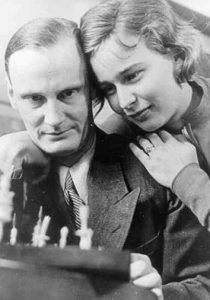
Harro & Libertas Schulze-Boysen, who were both executed for their resistance to the Third Reich
I imagined a young German woman (the Beauty of the tale) who marries a Nazi officer (the Beast) in order to save her father. But secretly Ava helps her Jewish friends whever she can. One day she meets Libertas, and is drawn into the dangerous world of the underground resistance. Living a double life, she must spy on her husband Leo in order to help save whom she can. Gradually she comes to suspect her husband is himself involved in a plot to assassinate Hitler. When the plot fails, Ava must risk everything to try and save her husband from a cruel traitor’s death.
The Beast’s Garden was in many ways the most difficult book I have ever written. I found the research utterly harrowing. For months, every day was spent reading about Hitler, about the Gestapo, about the Holocaust. I wrote the first draft entirely in first person, as if it was a diary or a memoir. But then I found it was too limiting, trying to tell such a big story from just one person’s point of view. I rewrote the entire book, in just six weeks, from a number of different points of view, including that of a Jewish girl in hiding.
On Thursday 12 February 2015, I wrote in my diary: ‘I finished the novel last night, at 1am … and could not sleep afterwards … very tired now, but oh so happy …’
The Beast’s Garden is my paean to all those ordinary people who found such extraordinary courage and strength of spirit within them during the dark days of the Third Reich, including, of course, Anne Frank and the people who hid her and her family.
You can read more about my liminal dreaming here and more about my research books for THE BEAST'S GARDEN here
PLEASE LEAVE A COMMENT - I LOVE TO KNOW WHAT YOU THINK!
